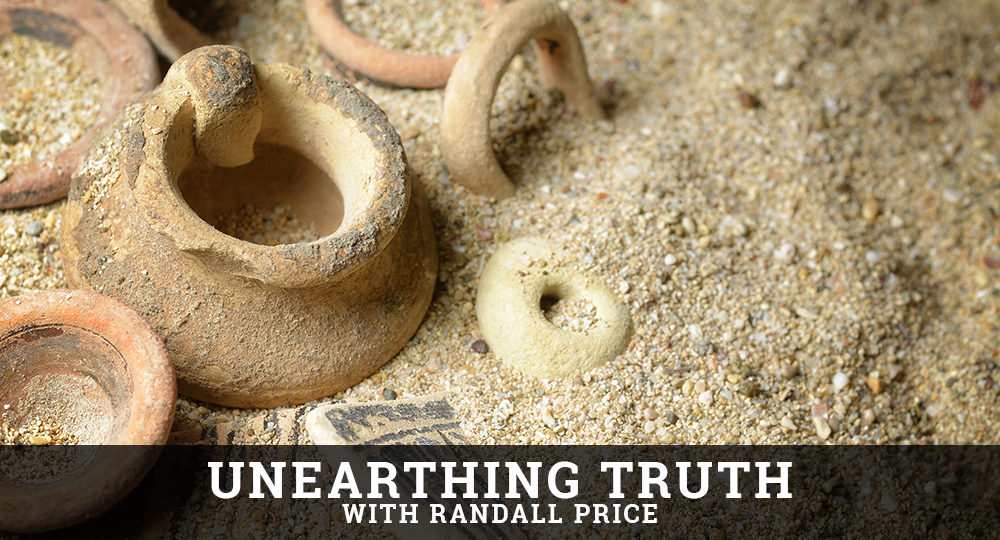Archaeology and Jericho (Part 1)
Bible critics love to attack the conquest of Jericho. Disproving or questioning its historicity undermines Israel and Israel’s claim to possessing the land.
Critics focus on three main issues: (1) the assertion of a massive invasion and conquest of the entire country of Canaan; (2) the theological problem of Canaanite genocide; and (3) the archaeological contention that Jericho was destroyed long before the time of Joshua, thus making the biblical account a myth. We will examine each of these issues over the next several columns of “Unearthing Truth.”
The Conquest. The Bible states, “So Joshua took the whole land, according to all that the LORD had said to Moses; and Joshua gave it as an inheritance to Israel according to their divisions by their tribes” (Josh. 11:23).
The archaeological record does not support such a massive conquest. However, a primary rule of biblical interpretation, particularly when a passage appears to contradict external evidence, is to confirm that the text actually says what it appears to say. In this case, the Bible does not present the conquest in the manner these critics assume.1
There is no doubt the conquest was extensive (“the whole land”). But this fact does not imply it was total or complete. Joshua’s army gained sufficient territory to enable the Israelite tribes to settle into their promised inheritances without further war. Joshua 11:13–17 indicates that only key Canaanite cities, such as Hazor, were conquered and destroyed, fulfilling God’s command (v. 15).
The context reveals that, of the Canaanite cities conquered, only three were burned down: Jericho (Josh. 6:2, 24), Ai (8:8, 19–20), and Hazor (11:13). At the end of the military campaign, there still remained “very much land yet to be possessed” (13:1), including Jebusite Jerusalem (15:63).
In addition, seven tribes remained without their inheritances because they had failed to conquer their land (18:2–3). The tribe of Dan was still unable to possess its land during the time of the judges (Jud. 18:1). Furthermore, the Israelites disobeyed God by making an alliance with the Gibeonites (Josh. 9:3–26), resulting in the divine discipline of continued Canaanite conflict and spiritual contamination (Jud. 2:2–4).
Clearly, Joshua failed to drive out the Canaanites completely; and, over time, the Israelites occupied the area gradually, settling among the Canaanite population (Josh. 9:21–27; 13:13; Jud. 1:29–33).
This more accurate understanding of the biblical text confirms the archaeological record. Typical Israelite structures, such as the four-room house, collared-rim jars, and lime-plastered cisterns, had Canaanite predecessors. While there are subtle differences in Israelite design, the basic structures reflect the Canaanites’ influence on the Israelites as they lived among these people.2
The criticism that archaeological evidence contradicts the Bible fails here because the critics misread the biblical account. Rather, the archaeological evidence that the Israelites settled in Canaan gradually agrees with the picture of daily life found in the historical narratives. Given a proper interpretation of the facts of the conquest, the biblical text and the archaeological data agree.
ENDNOTES
-
-
- For a thorough treatment of this issue, see David S. Merling, The Book of Joshua: Its Theme and Role in Archaeological Discussions, Andrews University Dissertation Series (Berrian Springs, MI: Andrews University Press, 1997).
- Paul J. Ray, Jr., “Classical Models for the Appearance of Israel in Palestine” in Critical Issues in Early Israelite History, Bulletin for Biblical Research Supplement 3, ed. Richard S. Hess, Gerald A. Klingbeil, and Paul J. Ray, Jr. (Winona Lake, IN: Eisenbrauns, 2008), 79–93.
-







